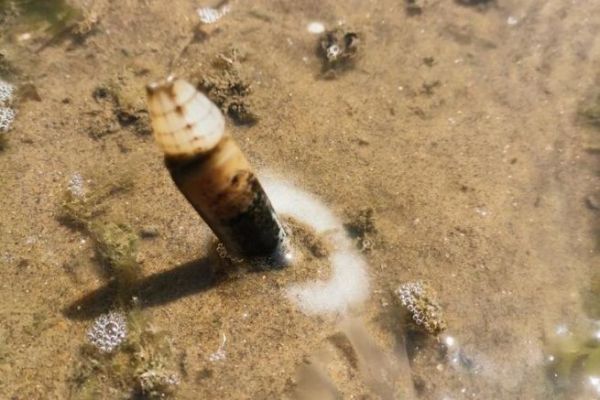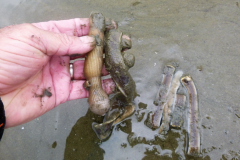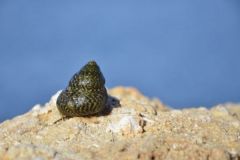The razor clam is a bivalve with many advantages. Not only is it tasty, but it's also fun to fish, making it an exciting activity to share with the whole family. Finally, for us fishermen, it makes an excellent bait for sea bream.
Buried deep in the sand
Razor clams are found on fine sandy or slightly sandy-muddy areas at low tide and never very far from the water. To find them in sufficient numbers and size, you need to favour high tides. The legal catch size is 10 cm. Below this size, it is forbidden to keep it.
It is then buried, sometimes as deep as 50 cm below the surface, and can be recognized by its characteristic hole. Living in colonies, if you find one, chances are you'll have a good harvest.
Here's how to harvest it.
A specific hole
There's no need to dig to pick up razor clams... You simply need to locate it by its characteristic 8-shaped hole. Ideally, you should look for it where there's still 1 cm of water and on a windless day, for better visibility and, above all, so that the waves don't plug up the holes, making them difficult to identify.

A little salt
Once you've identified the hole, pour fine salt over it and wait... Sometimes 30 seconds and you'll see the knife emerge from its hole. All you have to do is grab it and pull it out.
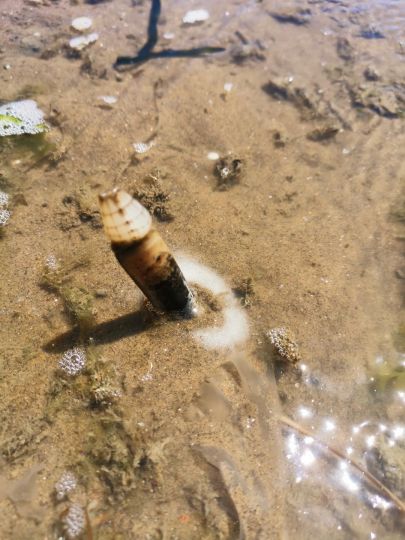
Cool storage
Once harvested, place it in a bucket, if possible sheltered from the sun with a little seaweed, then store it (for a few days) in your refrigerator crisper. You can even freeze it, and it will remain excellent for fishing.
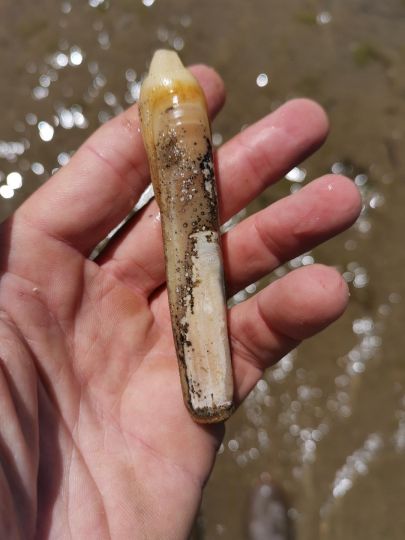
Whole or without shell
The knife can be used without the shell, in which case it is eschewed like a worm using a hollow needle, then wound with elastic thread for a better hold.
But it can also be used whole, which helps it to hold its shape and select king bream.
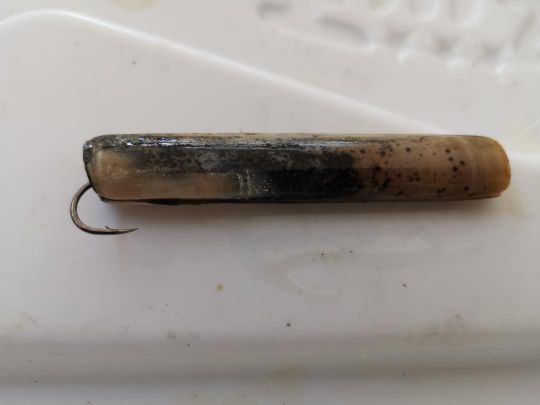
Escher a whole knife
To eschew a whole knife, you'll need a locher needle. This is a needle with a pointed side and a hook (or eye) on the other.
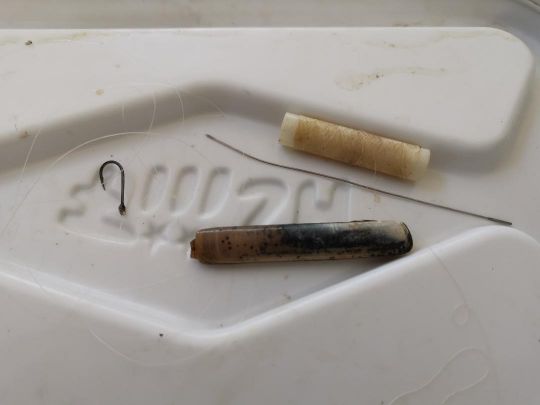
- Thread the knife onto your needle, siphon side up.

- Pass the thread of your leader (or the loop if you use a staple) through the hook of your needle.
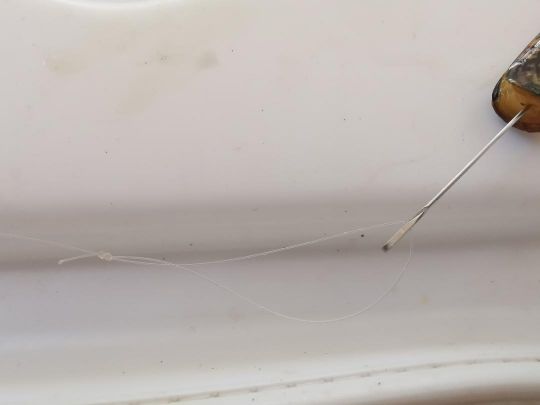
- Slide the knife along the length of your leader to the hook.

- Leave the tip of the hook protruding from the shell.
- Finally, you can bind your knife with elastic thread if it has a tendency to open.
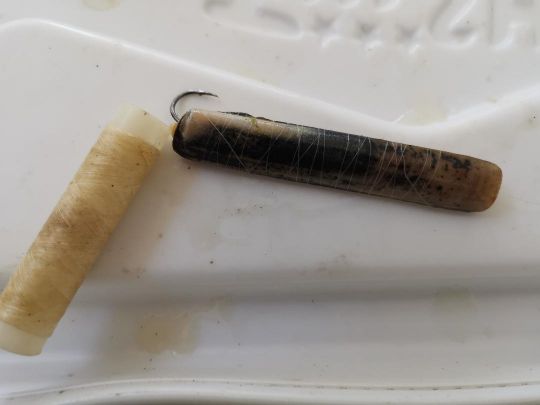
Your assembly is ready!

 /
/ 